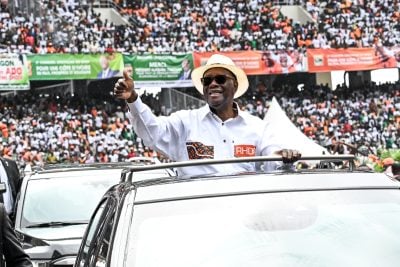This article was produced with the support of Ministry of Energy and Petroleum of the Islamic Republic of Mauritania
Mauritania is stepping confidently into a new era, positioning itself as a resilient energy player with a bold vision for the future. Beneath its windswept deserts and coastal waters, the nation holds vast untapped resources – oil, gas, minerals, and the potential of green hydrogen – poised to transform its economy and uplift its 4.9m citizens.
Stability anchors this growth, with Mauritania standing as a rare beacon of peace and security in a region grappling with upheaval, coups, and shifting alliances. Following the presidential election this year, the country is wooing some of world’s largest energy companies.
Mauritania’s ambitious energy and mineral sectors, coupled with pioneering moves including the world’s first green hydrogen code, align with Europe’s push toward decarbonisation. As demand rises for clean energy sources in green hydrogen and steel, Mauritania’s positioning and abundant resources make it an attractive partner for Europe and beyond.
According to the African Development Bank’s African Economic Outlook 2024, the country’s projected growth rates – 4.2% in 2024 and 5.5% in 2025 – outpace both African and global averages. Much of this growth will be powered by thriving mining and hydrocarbon sectors.
“We all know that we live in a world marked by multidimensional challenges, particularly of a security and energy nature, which we are all confronted with,” says Mauritania’s Minister of Energy and Petroleum, Mohamed Ould Khaled. “Despite this, Mauritania continues to be a haven of peace in the sub-Saharan region. Mauritania also has stable democratic institutions and an exemplary political stability. This is an asset that we hold dear, because it is the guarantee of our progress and our sovereignty.”
In October, British oil giant BP flared the first gas at the Greater Tortue Ahmeyim (GTA) field, an offshore resource shared by Mauritania and Senegal that’s set to pump the first of its 15 trillion cubic feet (TcF) of natural gas by early 2025. “The GTA project should play a transformative role in Mauritania’s economy. First and foremost, it will generate revenue, create added value and lead to the emergence of a national oil and gas industry,” says the Minister.
“To get to this point, we had to overcome a lot of financial, technological, environmental and governance challenges. Today, the parties involved in the project are delighted with the success they have achieved: all the technological components of the project are in place, the subsea systems are connected, and we can say with confidence that all the project’s construction efforts will soon be crowned by the delivery of the first commercial cargo.”
As part of Mauritania’s Gas Master Plan, Nouakchott is weighing the development of a dedicated pipeline network to transport gas from the GTA once production is underway. Beyond this immediate infrastructure, the GTA project is positioned to spark broader industrialisation, bolster local energy supplies, and fuel economic growth across diverse sectors, including mining and steel processing.
“Mauritania has reformed its legal investment framework to attract foreign capital into the energy sector by simplifying regulatory processes, offering tax incentives, and strengthening legal protections for foreign investors,” Ould Khaled tells African Business. “The new Electricity Code also paves the way for both domestic and international investors to access the energy market, with protective measures designed to help project developers.”
These new policies actively foster public-private partnerships (PPPs), particularly within energy and infrastructure, which could greatly boost mining, while aligning environmental standards with global best practices. At the heart of this vision is a synergy between gas, electricity, and mining, allowing Mauritania to supply its growing mining hubs with reliable, low-cost power. “Mauritania’s energy vision is based on the synergy between the gas, electricity, and mining sub-sectors. In fact, Mauritania intends to produce electricity on a massive scale from gas in order to supply the mining poles with reliable, low-cost electricity,” says Ould Khaled.
On the global stage, steel production is undergoing a transformation toward lower-carbon processes, creating fresh demand for high-quality ores and direct reduced iron (DRI) pellets. Mauritania, through the state-owned Société Nationale Industrielle et Minière (SNIM), is seizing this moment, aiming to double iron ore output to 45m tons annually over the next decade. With a focus on high-grade iron ore and DRI pellets, Mauritania’s mining ambitions align seamlessly with the international push for greener steel.
Plans are already in motion to climb the value chain with green steel production, powered by a robust vision for electricity-driven industry. At the same time, Mauritania is advancing toward green hydrogen, a venture poised to unlock transformative economic benefits that extend well beyond the mining sector.
Green hydrogen is truly a “game changer” for Mauritania, the Minister says. The $40bn AMAN project is designed to produce 1.7m tons of green hydrogen and 10m tons of green ammonia per year, a leap that could boost the nation’s GDP by 50-60% by 2035.
The Nour project, is on track to become one of the world’s largest green hydrogen ventures by 2030. Meanwhile, SNIM’s exploration of green steel production in partnership with ArcelorMittal positions Mauritania as a future leader in sustainable steel.
Beyond green hydrogen, Mauritania’s gas sector is rapidly expanding with projects like the BirAllah field, with the Banda field following closely behind. Uranium extraction, spearheaded by the Tiris project, is also slated to begin in 2026.
Mauritania has unveiled bold ambitions to position itself as a major player in green hydrogen, targeting an annual production of 12.5m tons by 2035. The country aims to capture 1.5% of the global hydrogen market by 2050.
These goals are backed by large-scale projects, including CWP’s 16-20 GW AMAN initiative, the 10 GW Project Nour by TotalEnergies and Chariot, GreenGo Energy’s 35 GW Megaton Moon, and a 10 GW facility from Germany’s Conjuncta and Egypt’s Infinity.
Mauritania’s vast solar and wind resources – boasting 457.9 GW in solar and 47 GW in wind – provide a formidable commercial edge. Just two days by ship to Europe, Mauritania’s prime location amplifies its export potential and creates robust opportunities for infrastructure development and local industry growth.
“Mauritania is ambitiously working to harness its vast energy resources, including renewables and, crucially, hydrogen” says Minister Ould Khaled.
“Renewable energy offers our country an unprecedented opportunity.
“We are uniquely positioned, consistently ranked by leading international consulting firms among the top nations for renewable energy potential due to our abundant sunshine, strong winds, vast land areas, and access to water.” With proximity to Europe, Mauritania envisions itself as a “giant platform for exporting clean energy” to meet global demands.
As Africa’s second-largest iron ore producer, Mauritania exported 13m tons in 2022 and has set its sights on tripling that figure by 2030.
Most of its iron is exported as raw ore, but clean energy offers a unique opportunity to process it domestically into green steel, unlocking further revenue streams.
December 2023 marked a key milestone with a US-Mauritania memorandum on carbon-free steel production, while SNIM’s collaboration with ArcelorMittal aims to produce 2.5m tons of green steel each year. Reaching this scale requires substantial infrastructure investment, and the EU’s €300bn Global Gateway programme is set to support critical projects like the Nouakchott-Nouadhibou road and high-voltage transmission lines—both vital to green hydrogen and steel production.
Mauritania is strengthening its energy infrastructure through a $289.5m partnership with the African Development Bank to expand electricity access and sustainability.
A key element of this collaboration, part of the Desert to Power Initiative, is a 225 kV transnational electricity link connecting Mauritania and Mali via a 1,373-kilometre high-voltage line with a 600 MW capacity and integrated solar power. Backed by a $272m loan from the African Development Fund and a $1.5m grant from the Green Climate Fund, this project represents the Bank’s largest-ever investment in Mauritania.
Complementing this is a $16m grant from the Sustainable Energy Fund for Africa (SEFA), targeting rural electrification across 40 southeastern communities. This project includes hybrid mini photovoltaic power plants with backup generators and aligns with local development through partnerships that support agri-food processing and the food cold chain.
Renewable energy projects are already transforming rural Mauritania. Masdar’s Sheikh Zayed Solar Power Plant, along with 16.6 MW of additional photovoltaic installations, now powers eight remote communities, covering 30% of their energy needs and reaching around 39,000 homes.
Overseen by SOMELEC, these projects generate over 31,000 MWh each year, saving 10m litres of diesel and offsetting 27,000 tons of CO2. Mauritania’s energy ambitions are clear, with renewables set to comprise 50% of its energy mix as the nation aims for 95% urban and 40% rural electrification by 2030.

 Sign in with Google
Sign in with Google 



